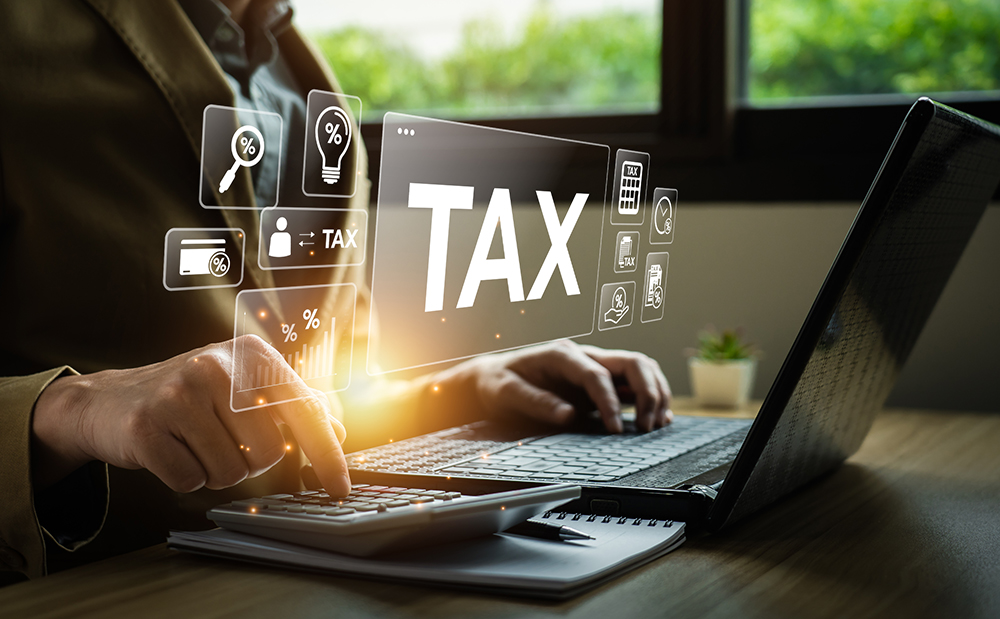Business Deductions and Credits

Small businesses have unique characteristics and needs. Hence, the IRS has some tax provisions that are designed for or may be particularly beneficial to smaller companies.
Bonus Depreciation
Businesses must generally write off the costs of assets over their "useful life"—a set number of years based on the kind of asset. With bonus depreciation, businesses can immediately deduct those costs, subject to certain limits. Under the TCJA, 100% bonus depreciation was only allowed through 2022, subject to a phaseout that would allow a deduction for 80% of costs in 2023 and 60% in 2024. Under OBBBA, the 100% bonus depreciation provision is made permanent.
Section 179 Expensing
Section 179 lets you take an immediate expense deduction for purchases of depreciable business equipment instead of capitalizing and depreciating the asset over time. OBBBA expanded expensing to allow $2,560,000 of immediate deductions with a phaseout threshold beginning at $4,090,000 for property placed in service in 2026. These thresholds will be indexed for inflation starting after 2026. Section 179 applies to many of the same assets as bonus depreciation, but also includes property bonus depreciation doesn't cover, such as HVAC, fire protection, and alarm systems, off-the-shelf software, and furniture used in lodging facilities.
Research and Development Expenses
Previously, the R&D credit allowed businesses to write off qualifying R&D expenditures, but they had to amortize those costs over five years. Under OBBBA, full expensing for domestic R&D expenses is made permanent. You have several options for claiming this deduction. Consult with your tax advisors to determine which tax credits your business qualifies for and would benefit the company the most. Another benefit for small business owners is how the R&D credit works with the new expensing rules. This special tax credit allows smaller companies that engage in research and development activities to offset their business's tax liability. It's meant to encourage them to innovate, create, and conduct research that is useful to society.
The law prevents you from getting both a deduction and a credit on the same expenses. Instead, you must reduce the amount of domestic R&E expenditures you expense by the amount of research credit you claim. For example, if you have $100,000 in qualifying R&D expenses and claim a $10,000 research credit, you can only deduct $90,000 of those expenses.
Pass-Through Income Deduction
Thanks to OBBBA, owners of some pass-through businesses can continue to claim a deduction of up to 20% of qualified business income—plus 20% of qualified real estate investment trust (REIT) dividends and qualified publicly traded partnership (PTP) income. This tax break was formerly set to expire at the end of 2025. The deduction phases out at $403,500-$553,500 (joint filers), $201,750-$276,750 (single filers), and $201,775-$276,775 (married filing separately—not including the qualified business income deduction. Above these thresholds, the deduction is based on whether you're a specified service trade business (SSTB).
Net Operating Losses
No business wants to lose money. But if your corporation did in 2025, those net operating losses that couldn't be claimed last tax year or remain unclaimed from earlier years can be carried forward indefinitely.
Business Interest Deduction
The Tax Code limits corporations' business interest expensing to any business interest income plus 30% of the business's adjusted taxable income (ATI). Generally, this limit doesn't apply to companies with average annual gross receipts for the prior three taxable years below a certain threshold ($32 million for 2026). OBBBA reinstates a more favorable business interest expense by allowing businesses to add back depreciation, depletion, and amortization to their ATI calculation, which can increase the amount of deductible interest. The change is effective starting in 2025.
Qualified Business Income Deduction
OBBBA makes permanent the deduction for qualified business income ("QBI") under Section 199A of the Internal Revenue Code as enacted initially by TCJA— generally equal to 20% of a noncorporate taxpayer's aggregate QBI, subject to certain adjustments. A new minimum deduction of $400 per year, indexed for inflation, has been added for any noncorporate taxpayer whose aggregate QBI from all qualified trade or business activities in which the taxpayer materially participates exceeds $1,000.
Pass-Through Entity Tax (PTET) Deduction
Since the TCJA capped SALT deductions for individuals at $10,000, many states adopted PTET workarounds, which allowed pass-through entities (like partnerships and S-corporations) to pay state income taxes at the entity level, rather than individual owners paying at the personal level, effectively reducing the pass-through entity's income. Under OBBBA, the PTET deduction essentially remains the same as before.
Business Meals
A taxpayer can generally deduct 50% of business meal expenses that are ordinary and necessary expenses, such as taking a client to lunch or a prospective client to dinner. Before 2026, a variety of employer-provided meals were also deductible. But no longer. Under OBBBA, starting in 2026, the deduction for employer-provided meals will be disallowed, except for certain meals provided on vessels, oil or gas platforms, drilling rigs, and support camps.
Home Office Deduction
Self-employed business owners who use their home as their principal place of business and use a portion of their residence as a dedicated office (or warehouse/ storage) space can claim the home office deduction. There are two ways to take a deduction: Deduct a portion of your mortgage interest, property taxes, insurance, and utilities equal to the percentage of your home's square footage dedicated to business use; or use the simplified method, which allows a maximum $1,500 deduction, depending on the square footage used.
Compliance
To support new deductions and credits, businesses may face additional documentation rules, including: Enhanced reporting for employee wage types (e.g., tip income, overtime tracking), verification for green or domestic-use incentives, and additional due diligence standards for tax preparers.


